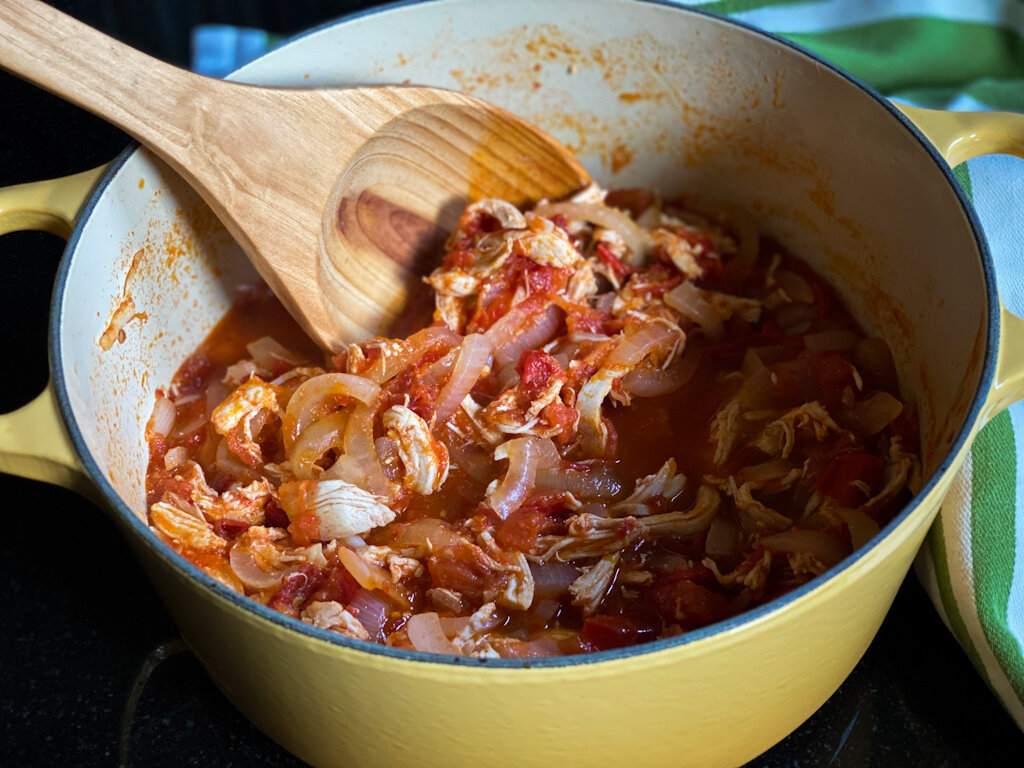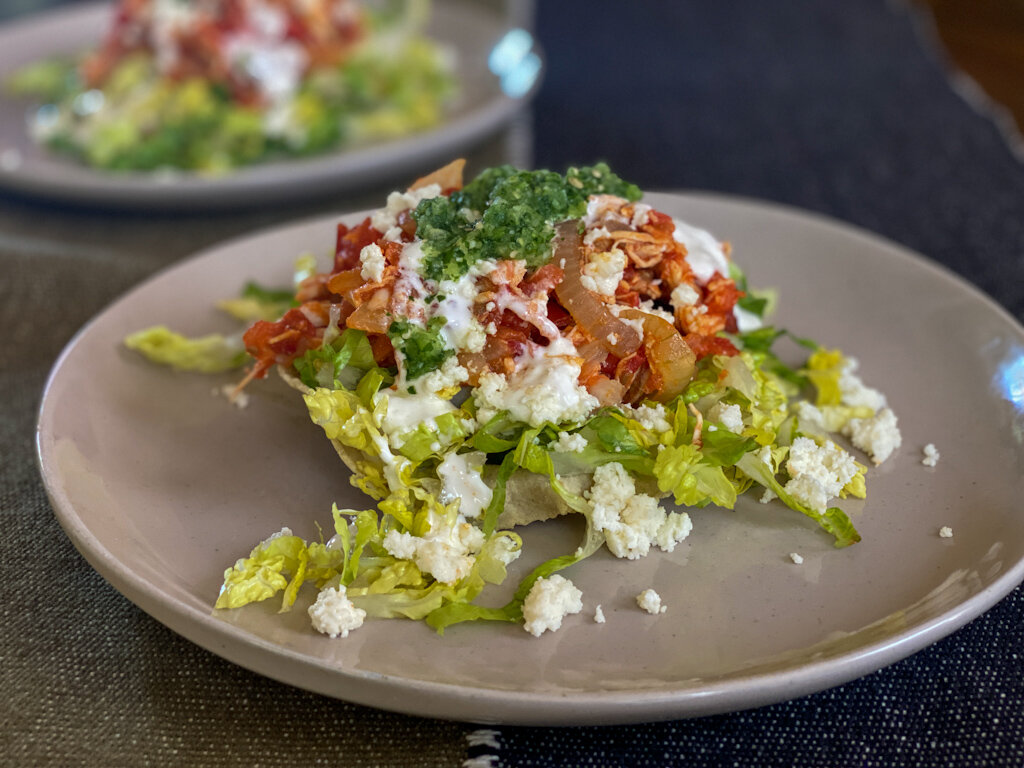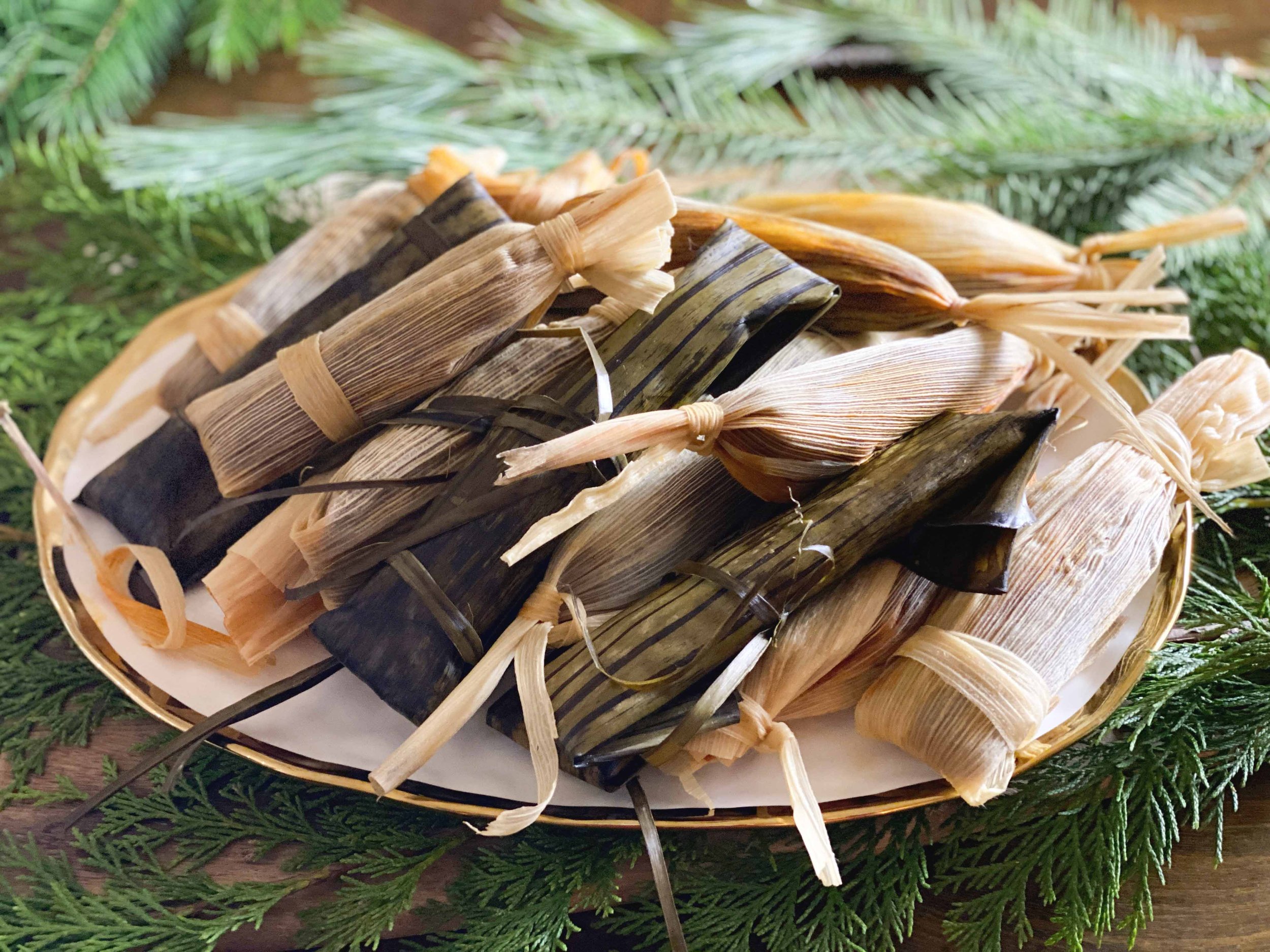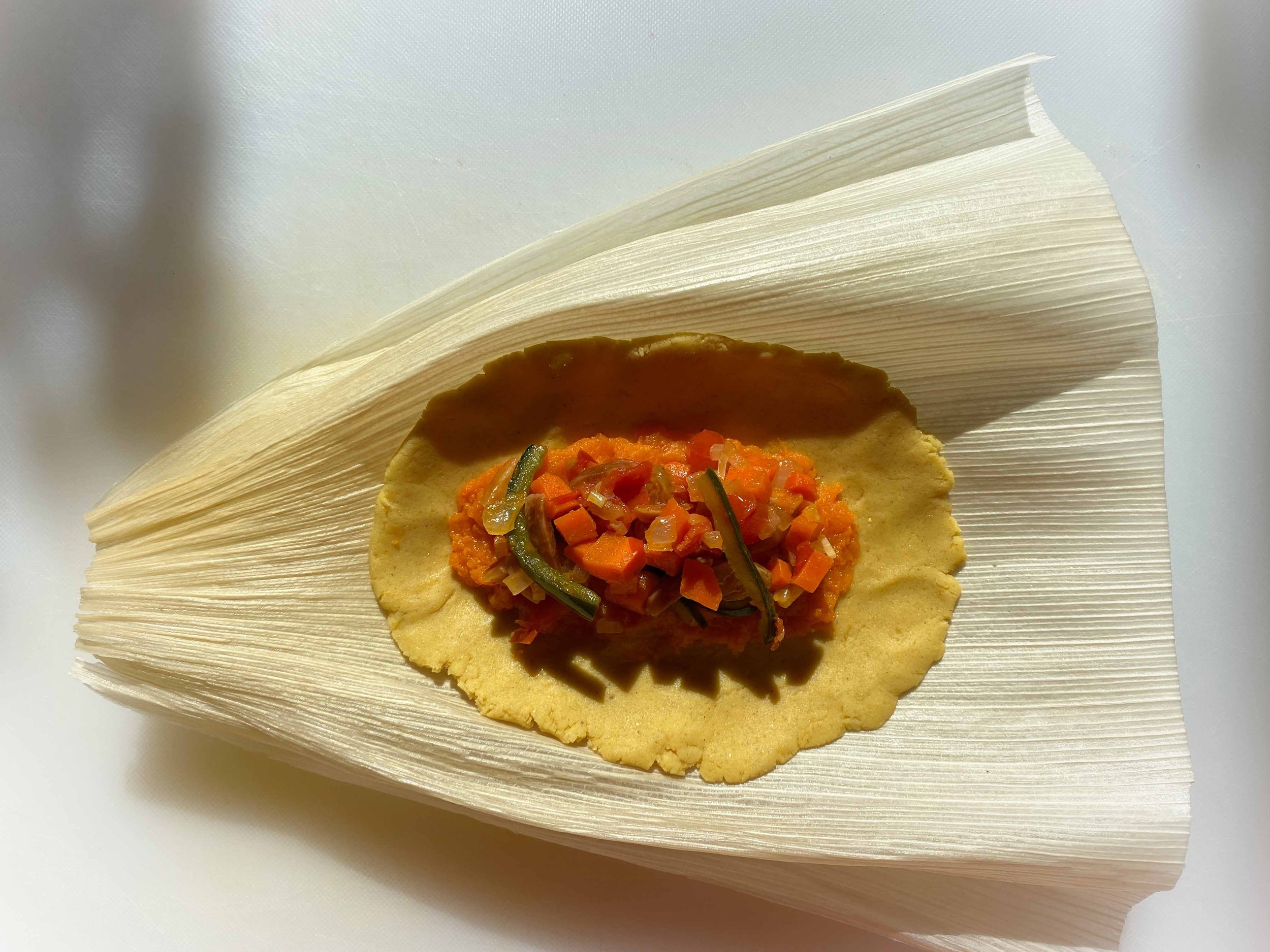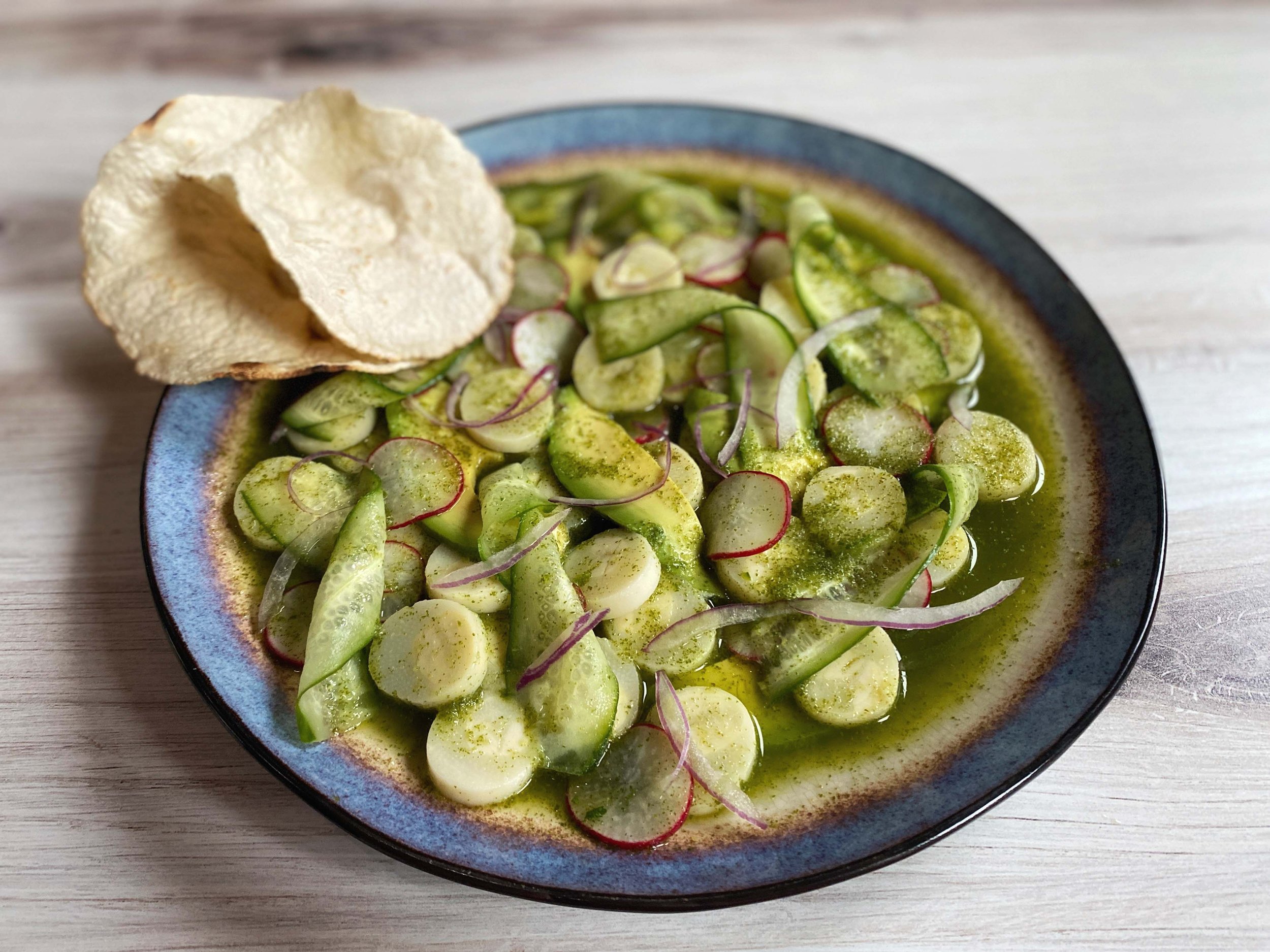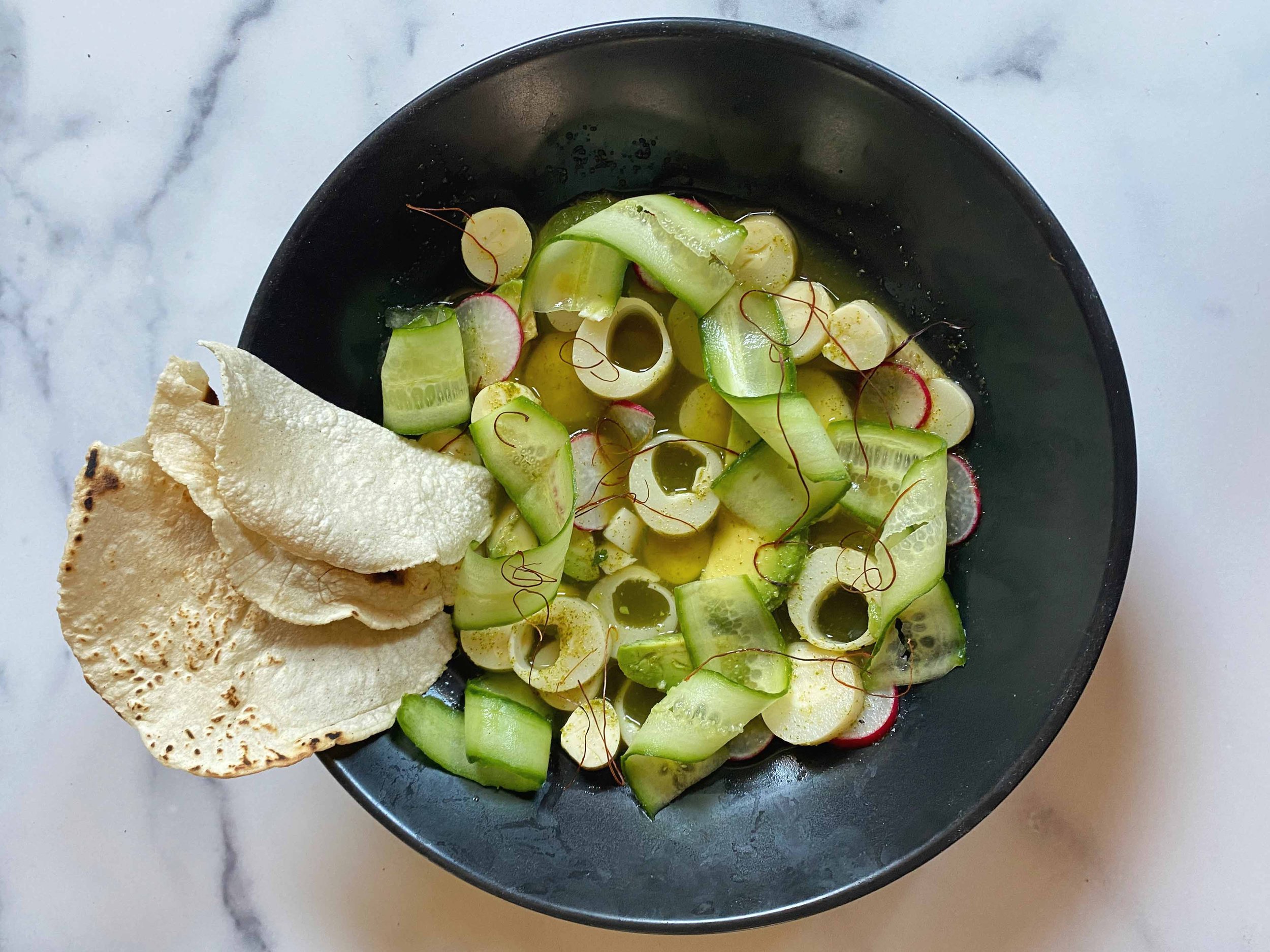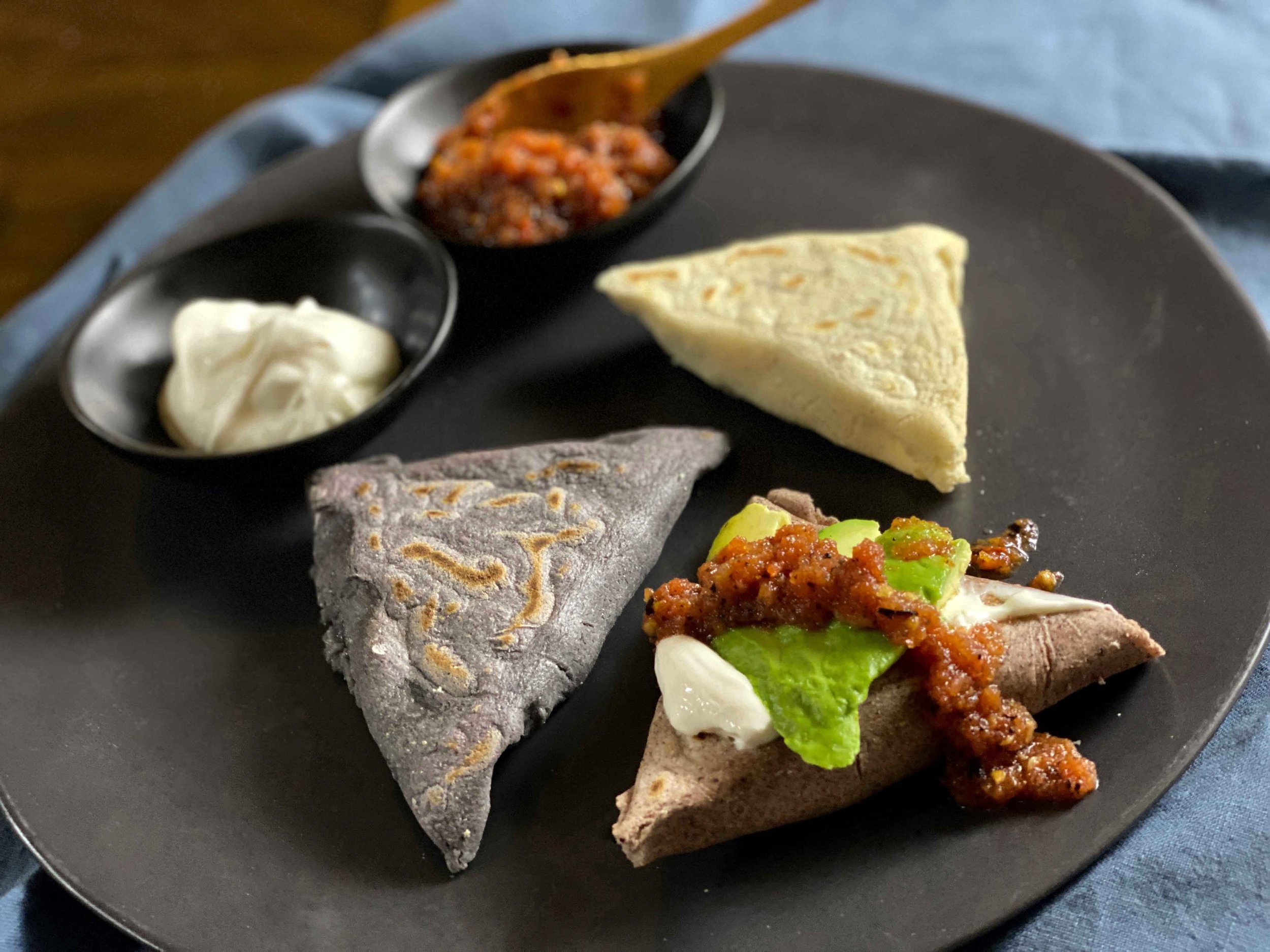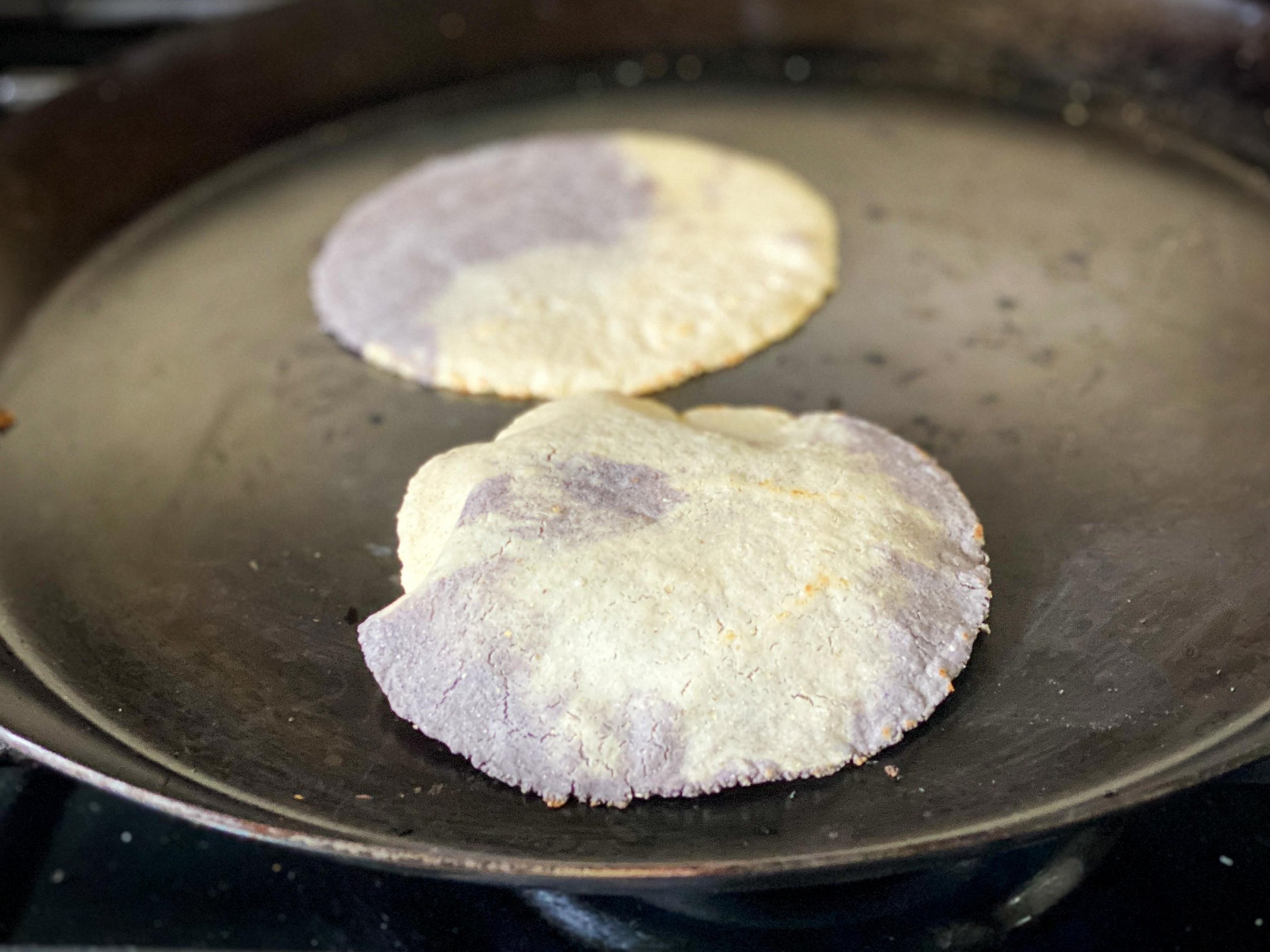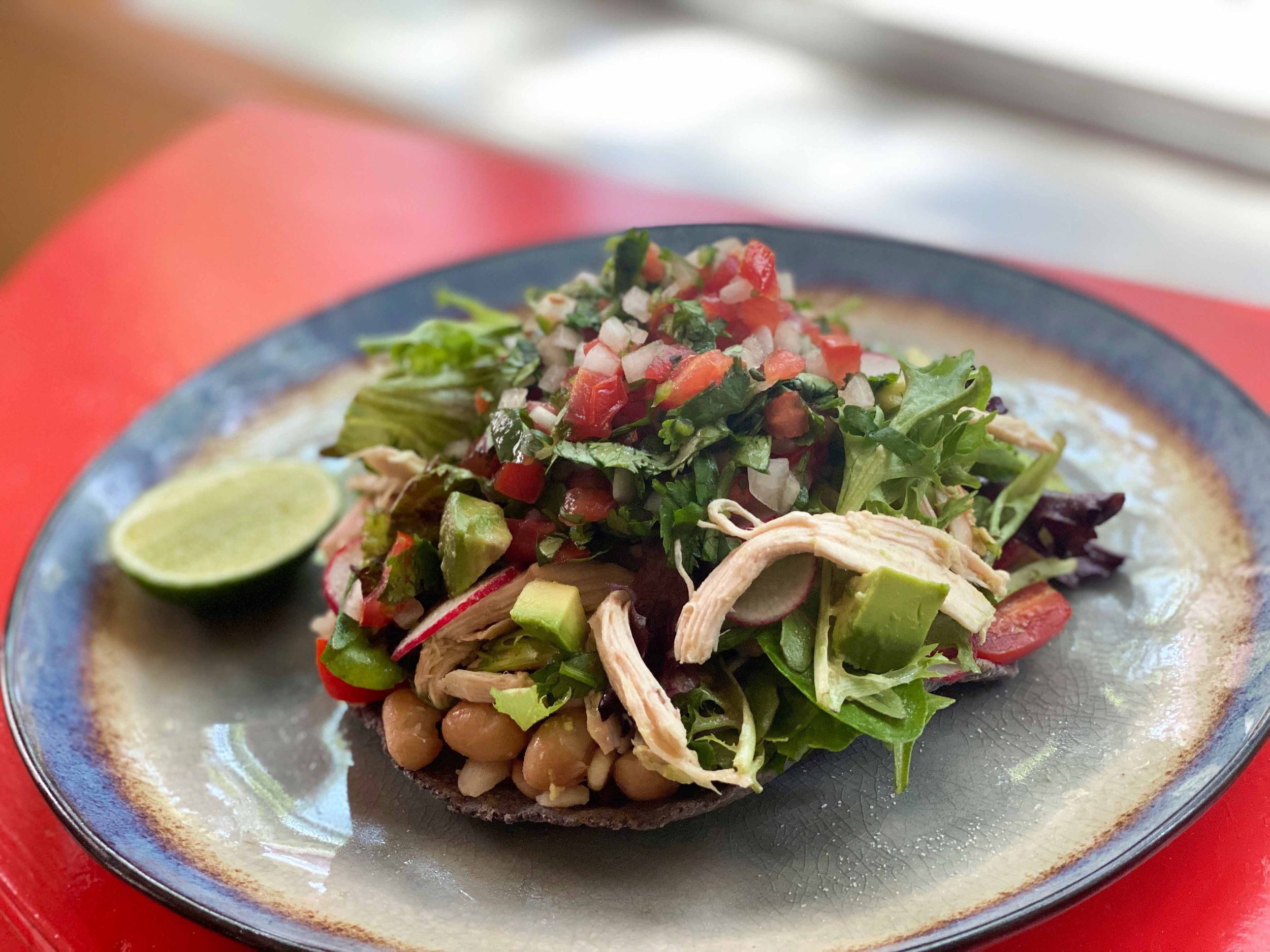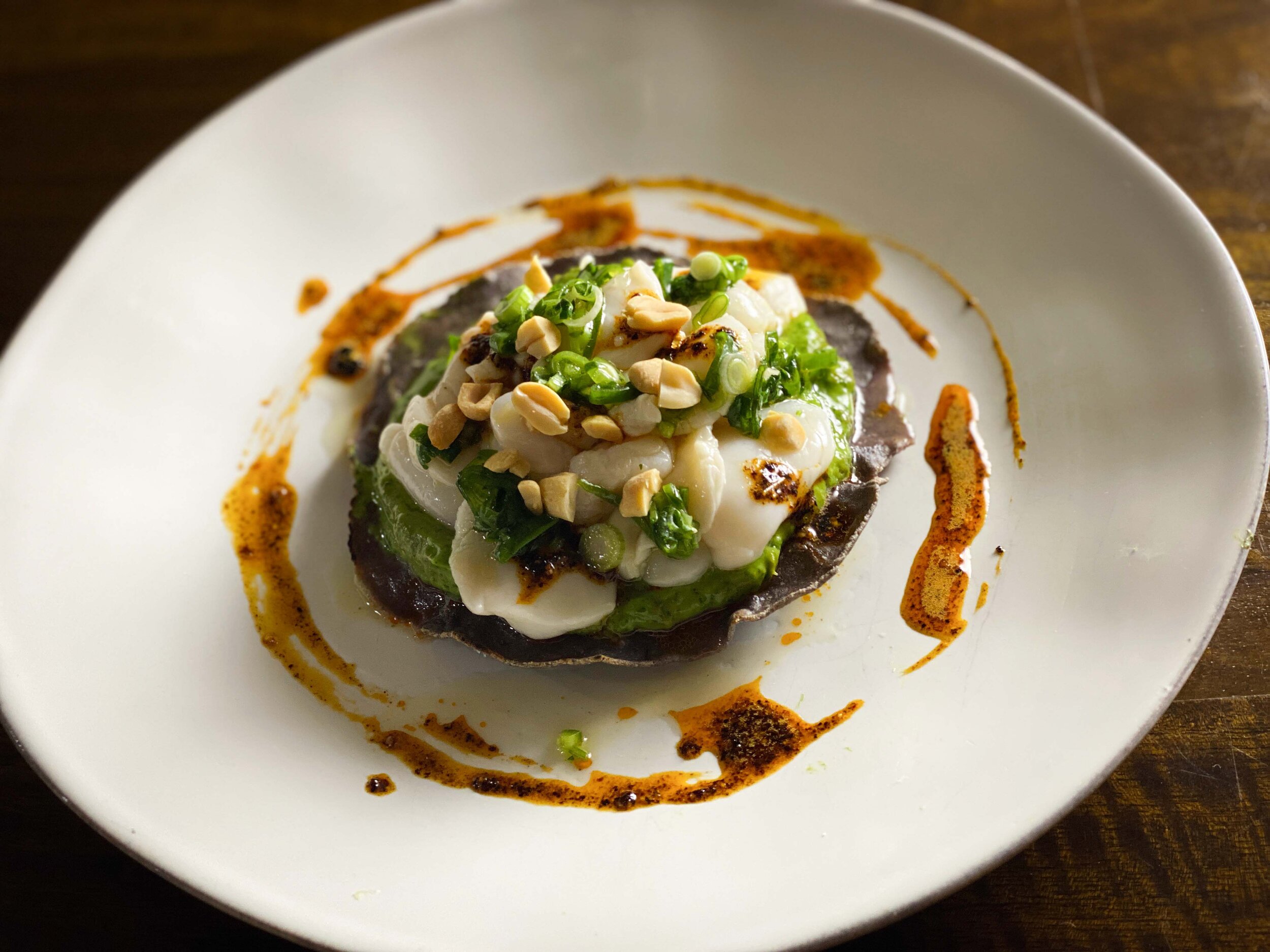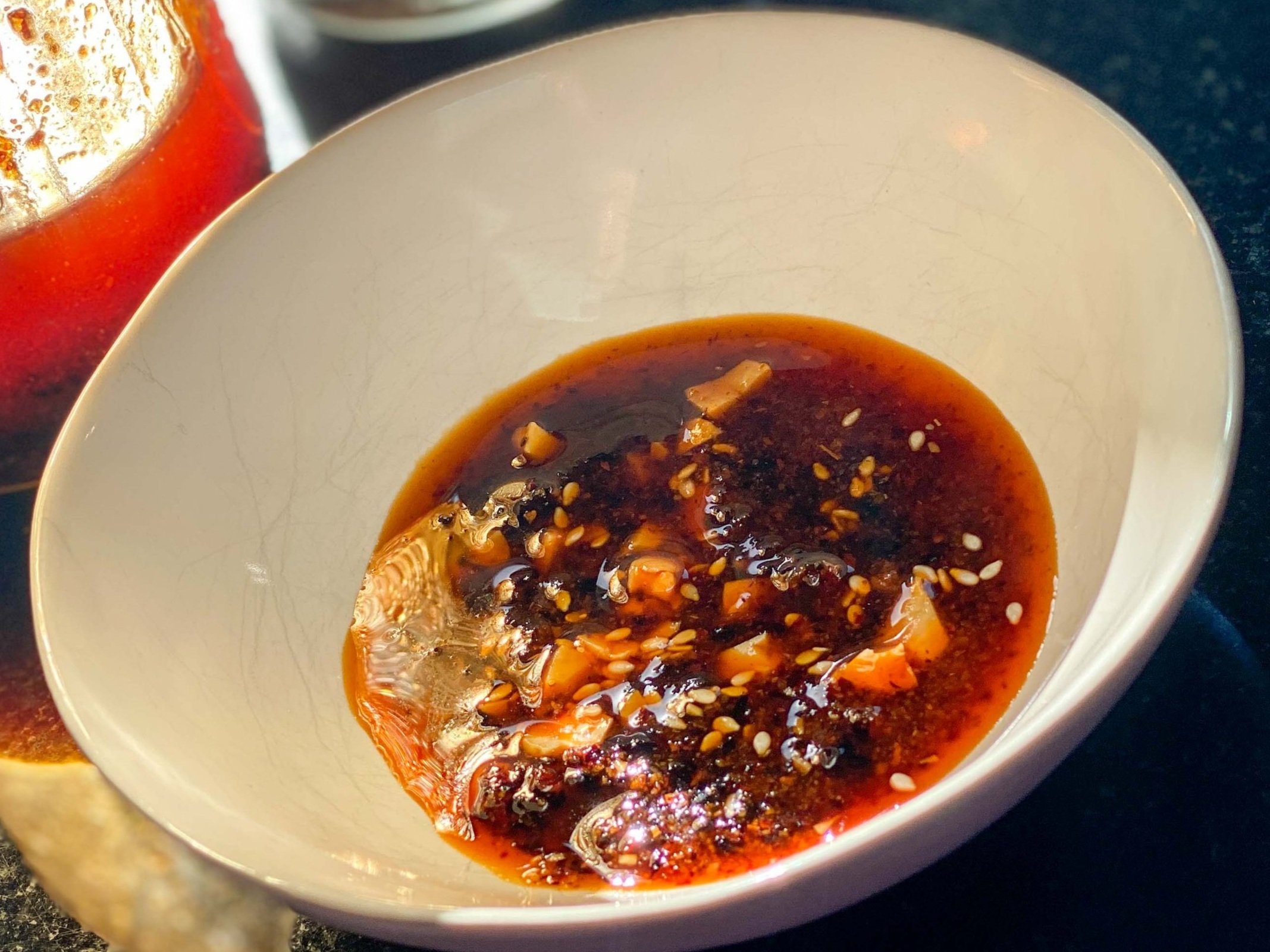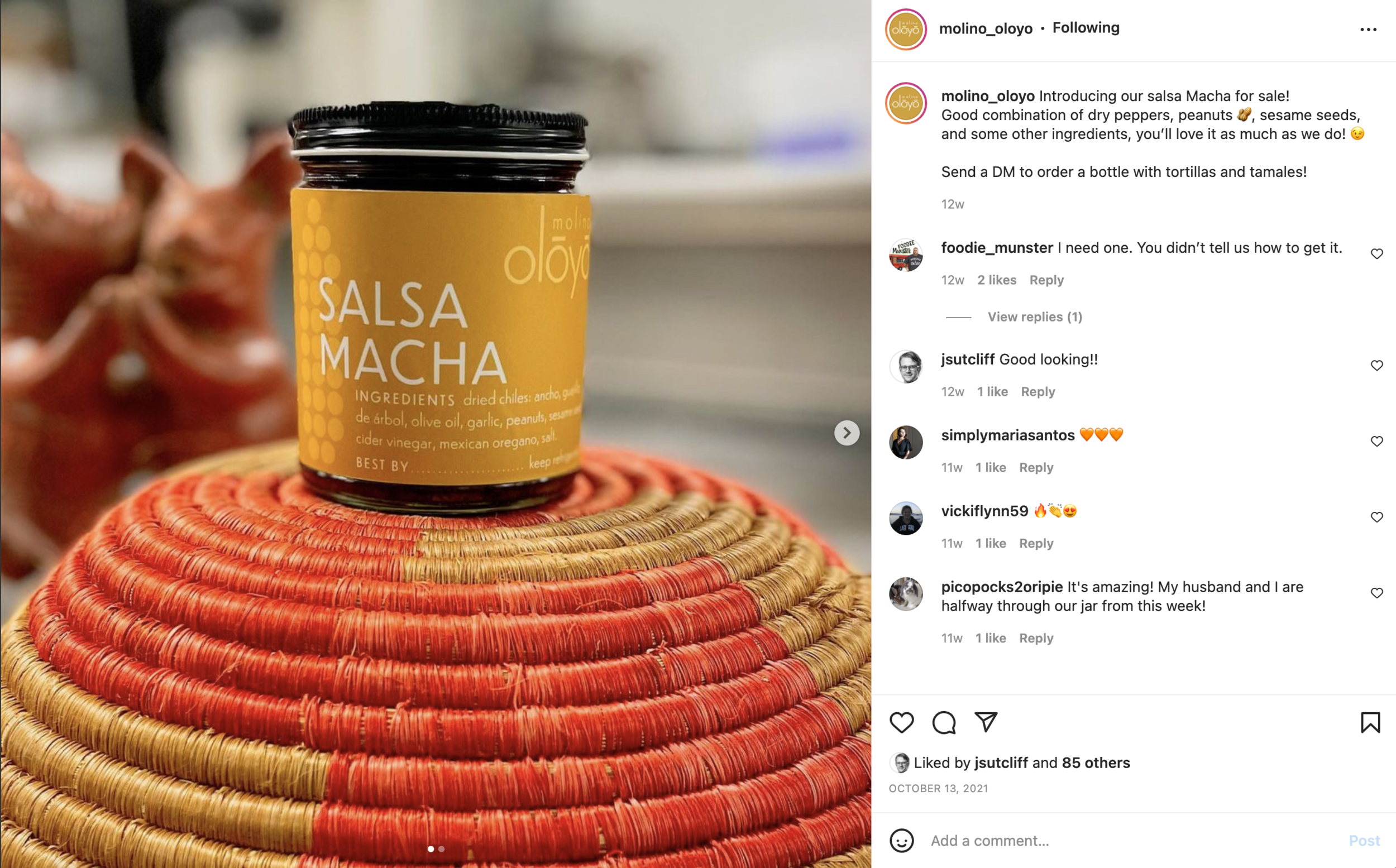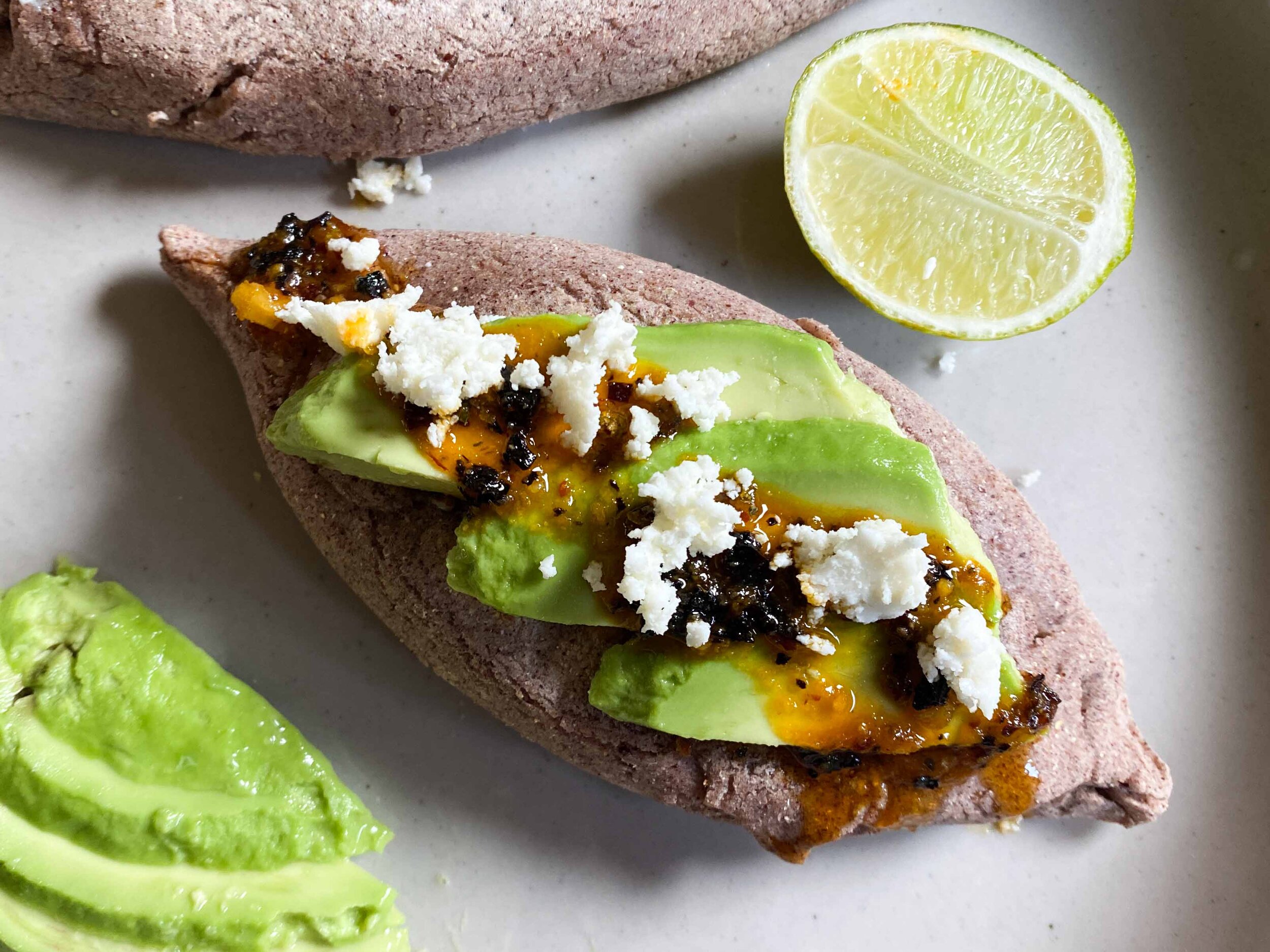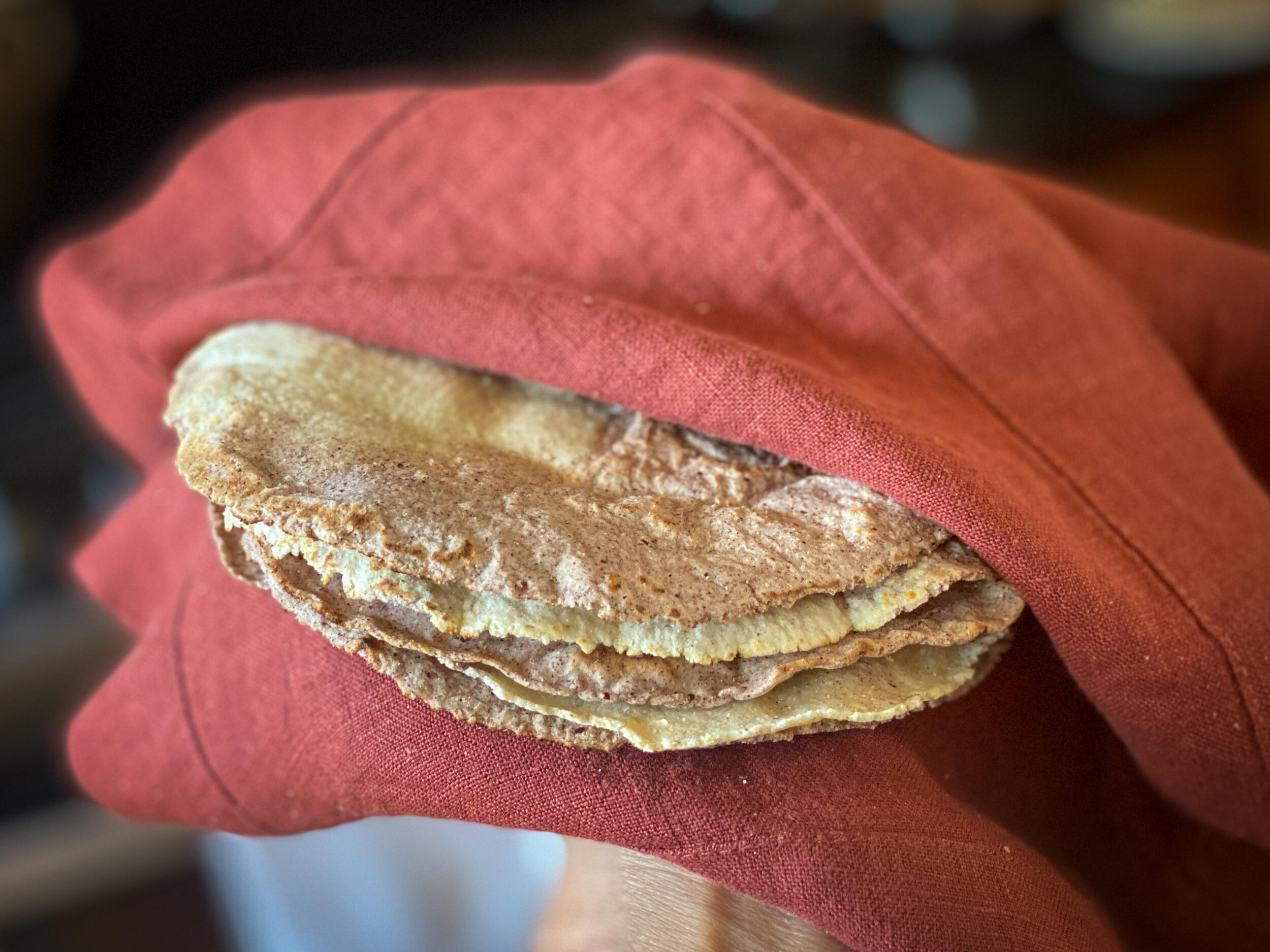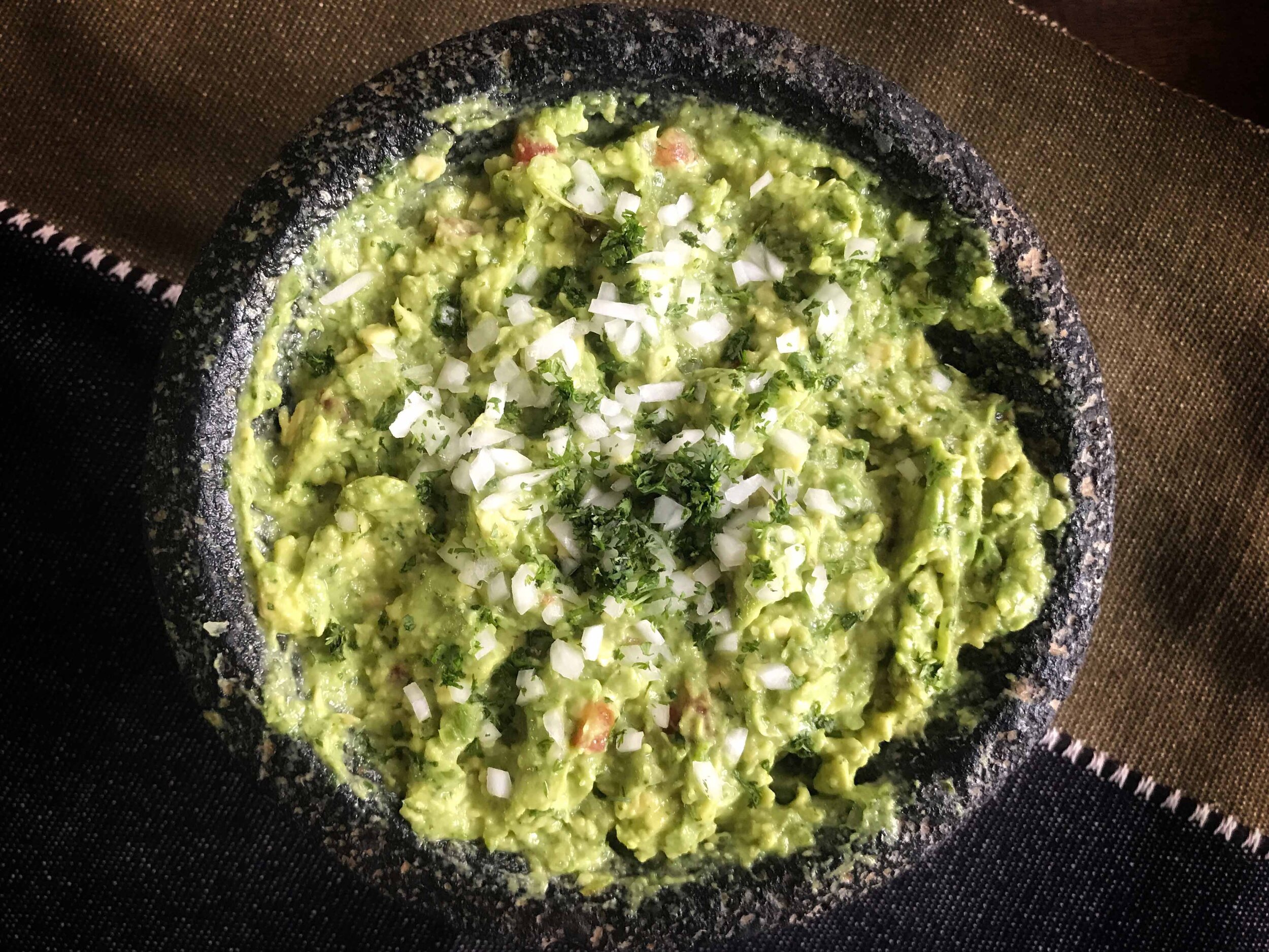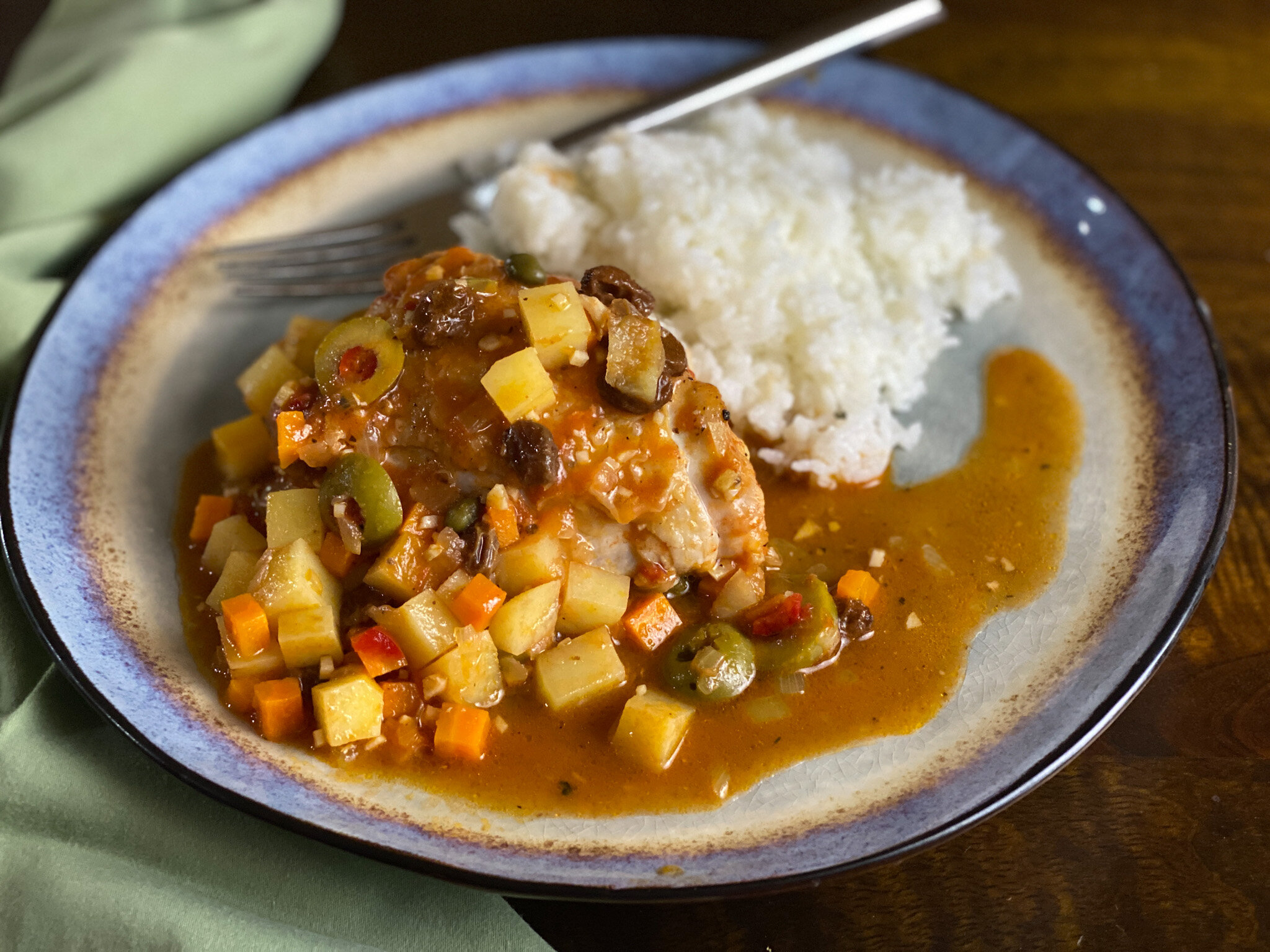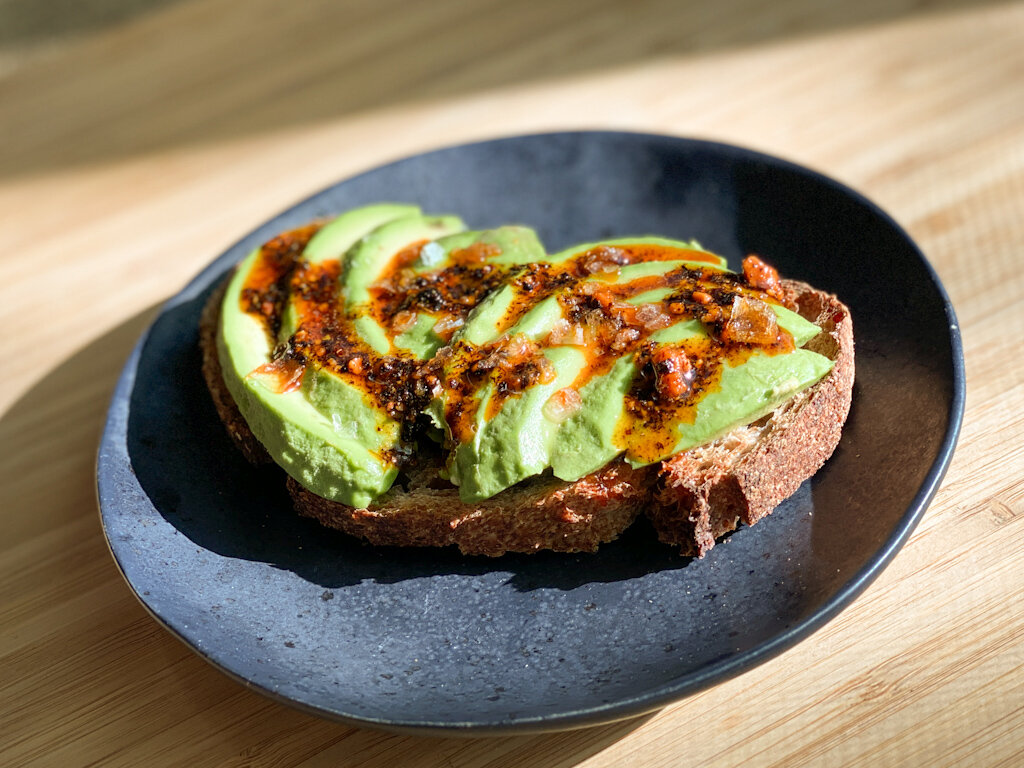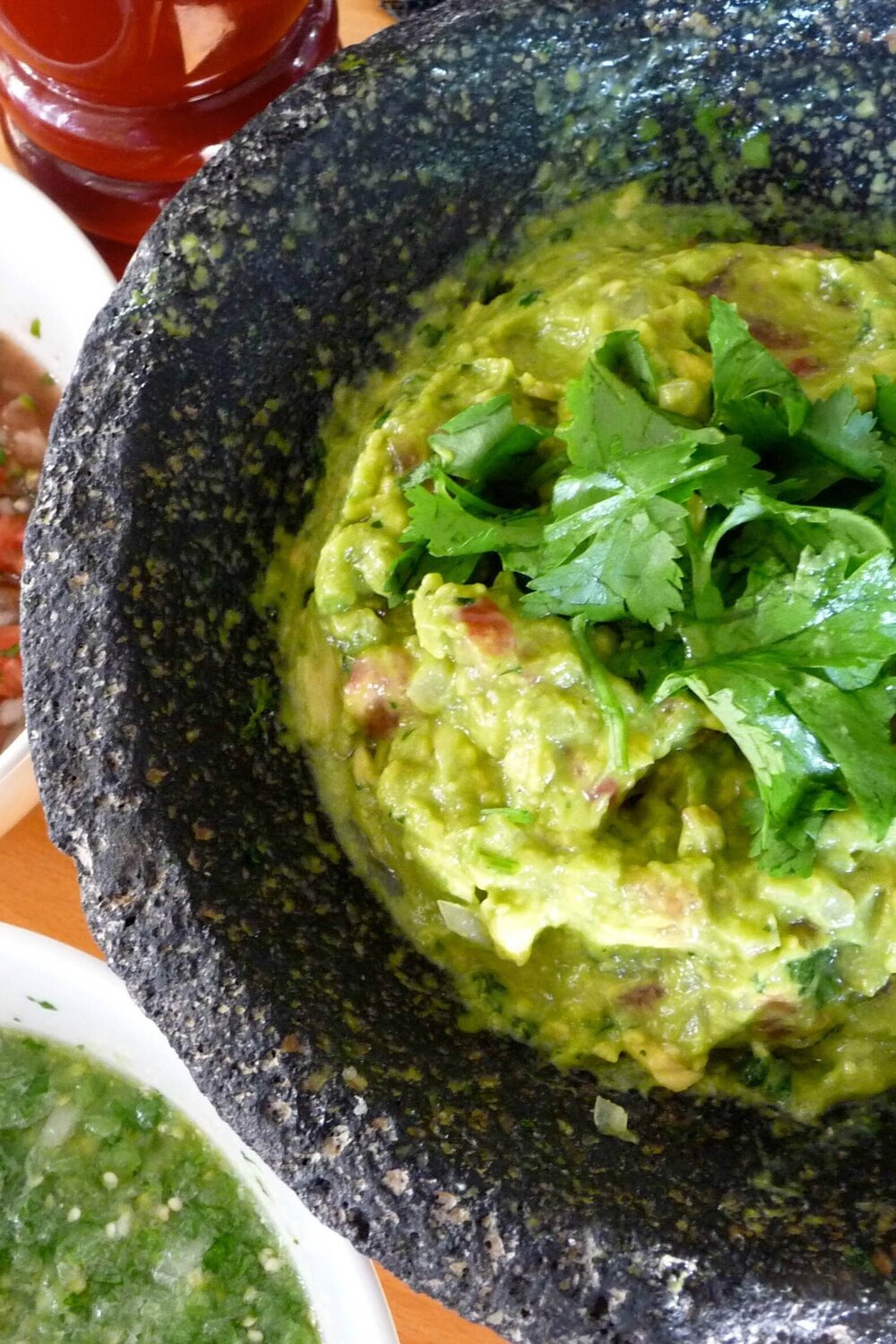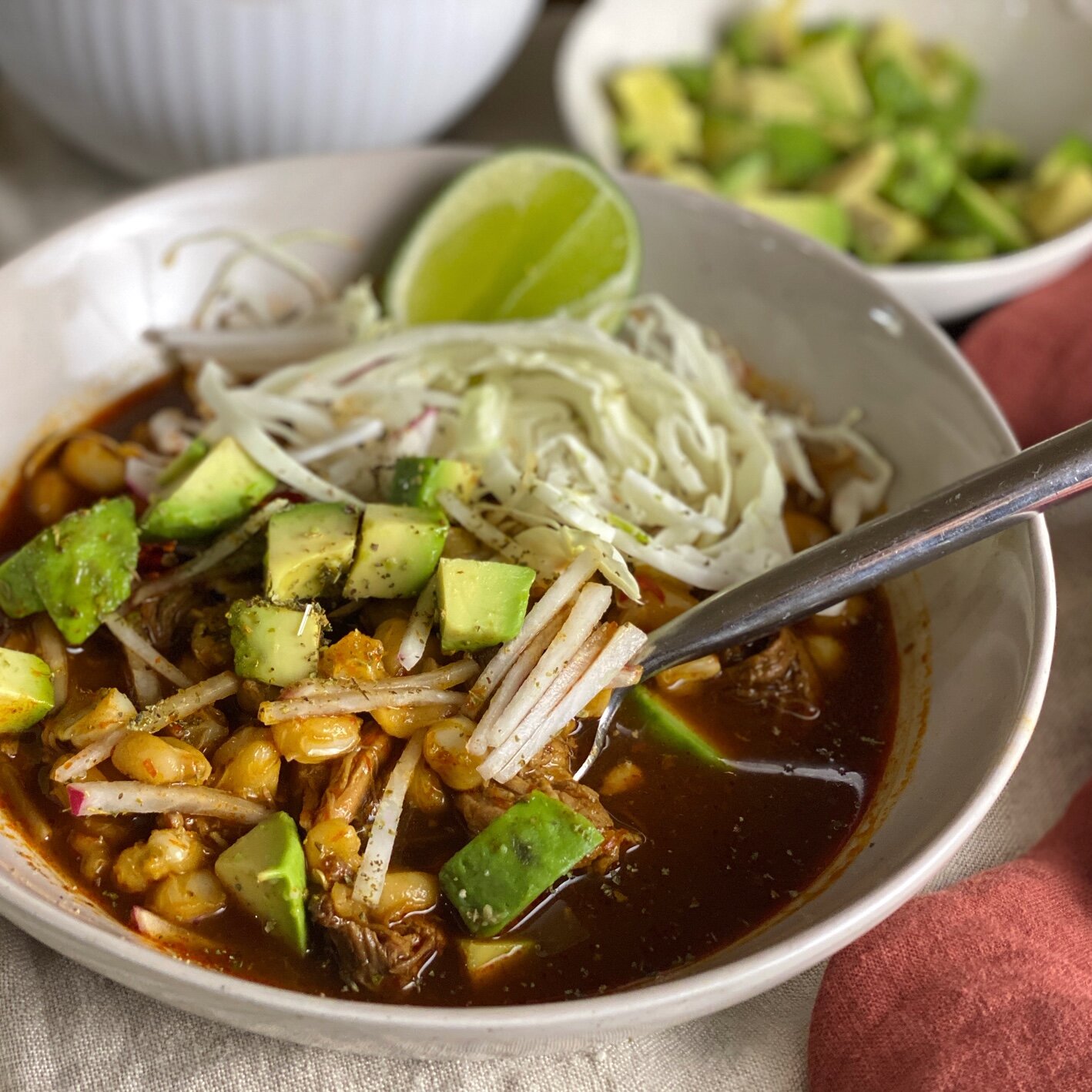By Leslie Brenner
Are you familar with the Mexican masa shape known as a tetela? It’s a triangular masa pocket filled with beans and/or cheese, and sometimes other ingredients. A popular treat in Oaxaca, tetelas have been showing up in Norteamericano restaurants and on cooking sites in recent years.
READ: “How to make tetelas — the tasty, triangular treats from Oaxaca that are about to become super-trendy”
Our friend (and Cooks Without Borders’ Mexican cuisine expert) Olivia Lopez offered us a dreamy tetela recipe for spring a while back, and now seems like the perfect moment to spotlight it — as the markets are filled with asparagus, fresh favas, spring onions and peas. I even picked up some green garbanzos last week at my favorite local Lebanese grocery.
Olivia’s recipe is in the seasonal-produce-forward, masa-centric style she features at her Dallas-based Molino Oloyo, and it’s a terrific recipe to create at home. Basically, bean-filled tetelas are topped with a quick sauté of those beautiful spring vegetables, then finished with dabs of requesón — fresh cheese you can find in Mexican markets; ricotta makes a fine substitute. Finish it with drizzles of salsa macha.
To make the tetelas, you’ll need first to simmer up a pot of bayo or mayocoba beans, and then fashion those into quick, vegan refried beans. You’ll also need to get your hands on some heirloom masa harina, if you don’t already have some. (We use Masienda’s masa harina, available through its website, and at many Whole Foods Markets. You can also buy it at Amazon.) Do you have a tortilla press? You’ll need that, too.
New to the world of heirloom maíz and masa harina? CHECK OUT: The Masa Movement Project
Try a simpler tetela RECIPE: Tetelas with Beans, Cheese and Salsa Verde
Because the tetelas can be held in a warm oven and the vegetables can be prepped (and salsa macha made) ahead of time, this is a lovely dish to make for a Mother’s Day brunch or other gathering — just throw the veg in the sauté pan right before serving.
Here’s the recipe:
RECIPE: Olivia Lopez’s Tetelas with Spring Vegetables
Meanwhile, if you happen live in North Texas, or you’ll be visiting Dallas later this month, you can taste Olivia’s extraordinary food: Molino Oloyo will hold one of its locally famous pop-ups from Tuesday, April 30 through Sunday, el Cinco del Mayo. Hopefully, I’ll see you there — I’ll be enjoying Olivia’s incomparable offerings at least one of the evenings, maybe more.
If you liked this story, we think you’ll enjoy:
READ: Brunch, picnic or dinner: 18 delightful recipes for Mother’s Day
READ: Salsa macha is the hottest condiment of the year, and we’ve got the best recipe
READ: Duck season? Rabbit season? Maybe, but dessert-wise, it’s Pavlova season
READ: ‘Masa’ is a must-have cookbook for Mexican-cooking aficionados and aspirants
RECIPE: Chicken Salad Tlayudita
RECIPE: Hearts of Palm Aguachile


